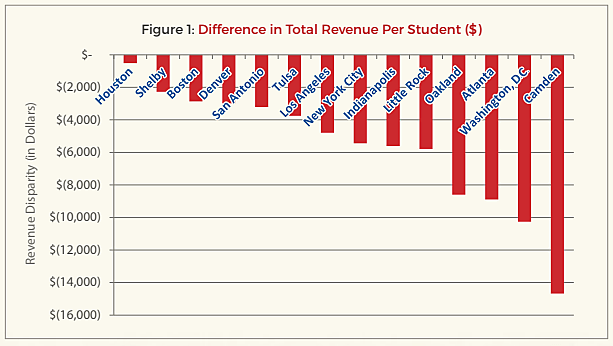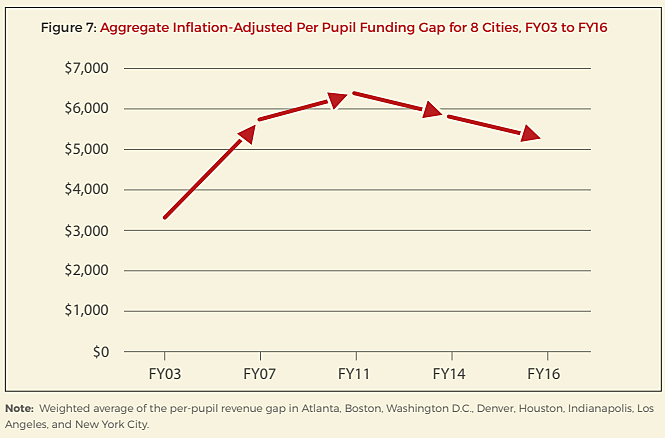What a lousy deal. My colleagues at the University of Arkansas and I just released another study examining funding disparities between traditional public schools and public charter schools in 14 cities across the country. The overall finding is clear: families lose a substantial amount of education dollars when they pick charter schools for their children.
Using data from the 2015–16 school year, we find that children in charter schools receive $5,828, or 27 percent, less than their traditional public school peers each year, on average. Put differently, a family forgoes over $75,000 in educational resources for their child’s K‑12 education if a charter school fits their needs better than the residentially assigned option. And, unfortunately, the funding inequities are much worse in some cities. As shown in Figure 1 below – and in the original report – children in charter schools in Washington, DC, and Camden, New Jersey receive over $10,000 less than their traditional public school peers each year.
But that’s not all. Our team has released four other reports over the past two decades with similar findings. And across the 8 cities with longitudinal data, the funding disparity favoring traditional public schools has grown by 58 percent since 2003 after adjusting for inflation. It’s like a swarm of mosquitoes in the summer. It’s persistent and never goes away.
Fortunately, one city in our sample has consistently demonstrated equitable funding across school sectors. In Houston, Texas, students in public charter schools receive only $517, or 5 percent, less than their peers in traditional public schools each year. In other words, equitable public school funding can be achieved if policymakers make the right decisions.
Families shouldn’t have to lose $5,828 each year in educational resources for each child that doesn’t fit into the one-size-fits-all education system. Thankfully, state policymakers have the authority, opportunity, and responsibility to achieve equal total funding of public school students in their states. Policymakers can deliver equitable education funding by revising state funding formulas to allow 100 percent of public education dollars to follow children to whatever school works best for them.


